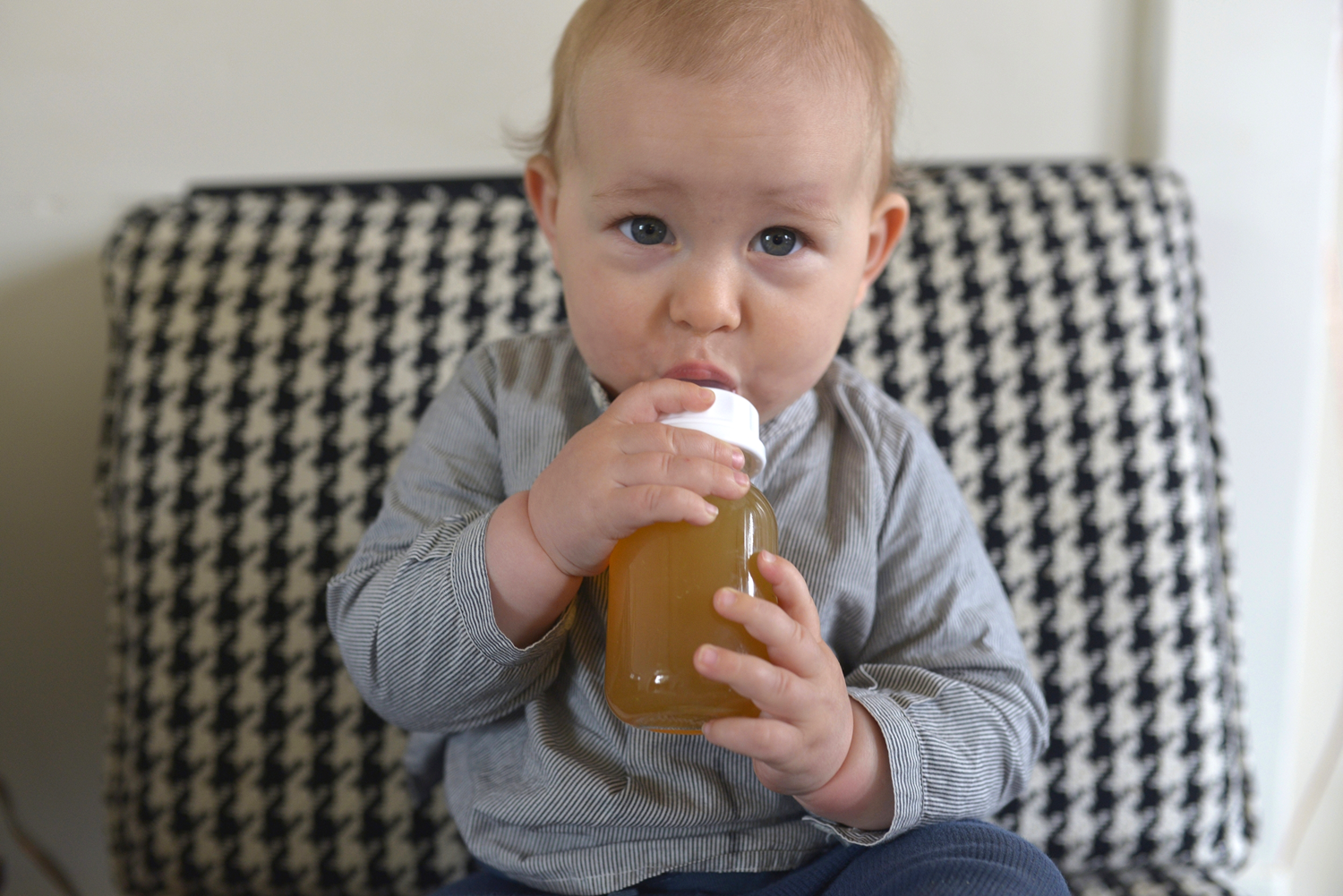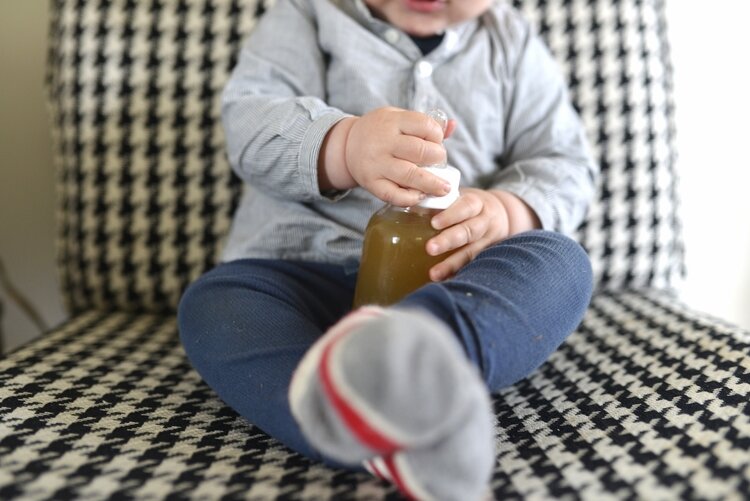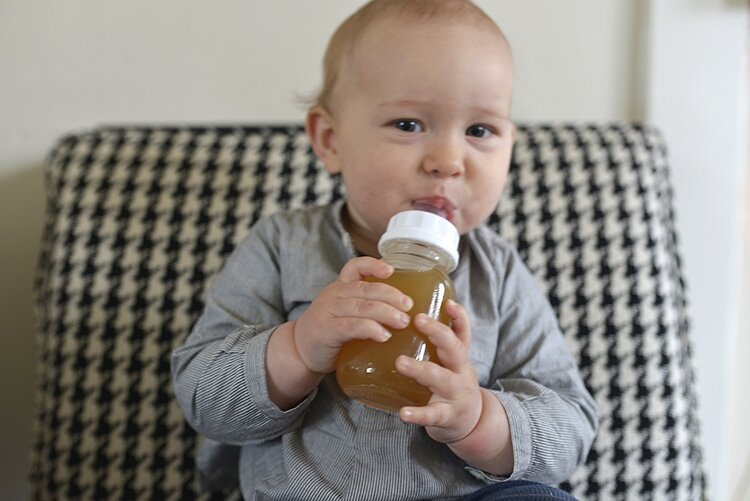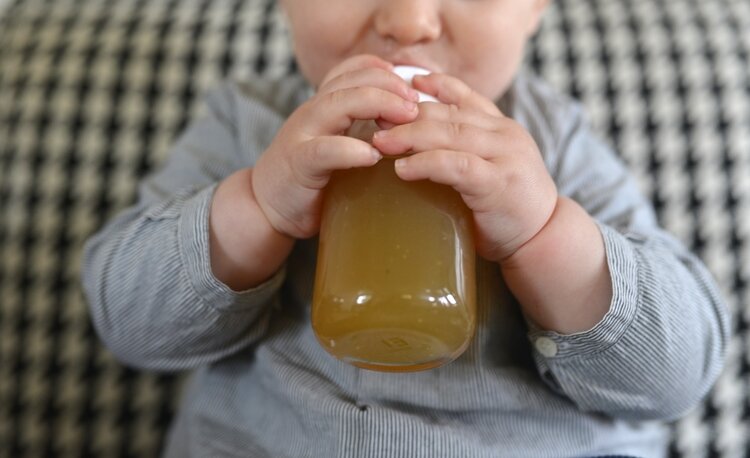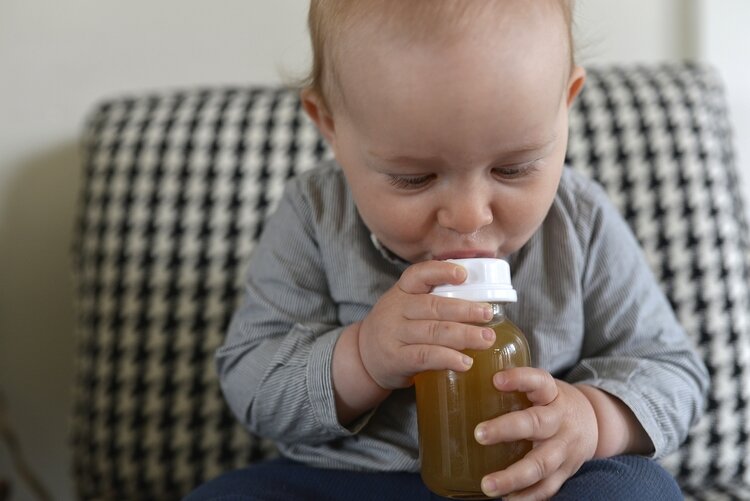Bone Broth for Babies
I’ve already written about the incredible benefits of consuming traditional bone broth during pregnancy, but this nutrient-dense liquid is also amazing for babies!
Unlike store-bought broth or stock, which is cooked for only 45 minutes to 4 hours, bone broth is simmered for quite a long time. As the broth simmers, nutrients leach from the bones, leaving you with a wonderfully nourishing and flavorful liquid.
Helps broaden your baby's palate
Breast milk (and formula) are quite sweet, so offering this nutrient-dense savory beverage helps to diversify your baby’s palate.
Strengthens growing bones and teeth
Bone broth is rich in an easily digested and assimilated form of calcium and magnesium, which are essential for your baby to build strong, healthy bones and teeth.
Helps build connective tissue and joints
Bone broth contains glucosamine and chondroitin, which are among the most important nutrients for joint care and can support the development of your baby’s joints.
Bone broth is also a great source of gelatin and collagen, which are key in building and supporting connective tissue. These nutrients also aid in building cartilage and bone. If your broth gels when cooled, the gelatin content is why that’s happening. Just lightly reheat before serving.
Reduces the risk of food sensitivities
Another wonderful benefit of collagen is its ability to strengthen the intestinal lining, which greatly reduces the risk of food sensitivities.
Supports immunity and digestion
The specific amino acids in bone broth perform a wide variety of functions, including boosting the immune system and improving digestion.
When and how much?
Bone broth can be given in small amounts as soon as your baby has been introduced to solids.
As with all liquids, the goal isn't to replace breast milk with broth in young babies — so offer broth as an addition to breast milk and solid foods, making sure that broth isn’t filling your baby up too much.
As your baby begins to consume more solid foods, the amount of breast milk they consume will naturally decrease. At this time, they can be given more broth — but again, as with all liquids, still watch that it is offered in addition to solids and not replacing them.
BONE BROTH RECIPE FOR BABIES
This is a no-salt added or sodium reduced version of my traditional bone broth recipe, and it’s great for young babies. As they consume more food and less breast milk, the sodium in this recipe can be increased slightly, if desired. If adults are enjoying this broth as well, add additional salt to taste when consuming.
What you'll need:
Slow cooker or large stock pot
Fine strainer
Ingredients:
2 pounds (or more) of bones
— If using raw bones, roast bones for 30 minutes at 350°F to improve the final taste.
— As with all animal products, I suggest trying to use the highest quality possible, especially when offering to babies.
2 carrots
2 stalks of celery
1 onion
1/4 cup apple cider vinegar
1/2-1 tablespoon of unrefined sea salt (optional for toddlers)
1 teaspoon peppercorns
Optional: any other vegetables and/or herbs/seasonings you like
For an even more calcium-rich broth, include vegetables such as turnip greens, leeks, green onions & additional celery.
Place bones in a slow cooker or a large stock pot. Cover the bones with cool water until the bones are submerged, and add apple cider vinegar. Let it sit for 20-30 minutes. (The acid helps leach the minerals from the bones.) Rough chop vegetables and add to the pot with the pepper, spices, or herbs you are using, and optional salt for toddlers. Bring the broth to a boil, then reduce to a simmer. Watch the broth for the first 2 hours for a film that floats to the surface. Remove this with a large spoon.
Recommended simmering times: (Don’t be afraid to cook for longer)
Beef/Bison/Lamb/Pork broth: 48 hours
Poultry broth: 24 hours
Remove from heat and use a fine metal strainer to remove all the remaining pieces of bone and vegetables. Broth can be kept in the fridge for up to 5 days or freeze for later use. Once chilled a layer of fat may form on the top which can be skimmed off with a spoon or spatula.
How to use: Sip for nourishment, or use when cooking veggies or making purees.
Become a Certified Nutrition Consultant
Let’s empower parents and nourish babies — together.
A strong start with solid foods can have a profound impact on a baby’s future health and preferences. Get certified to help families establish healthy habits right from the beginning.

